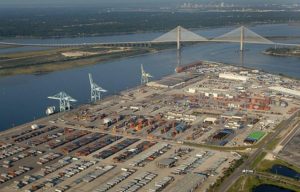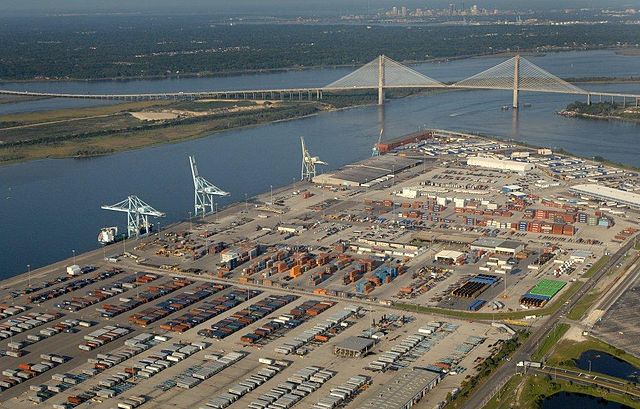 The World Trade Organization (WTO) has revised downward its forecast for world merchandise volume in both 2016 and 2017, warning that the growth rates of both trade and GDP have reached their slowest post-financial crisis.
The World Trade Organization (WTO) has revised downward its forecast for world merchandise volume in both 2016 and 2017, warning that the growth rates of both trade and GDP have reached their slowest post-financial crisis.
In a new report, the WTO said world trade will grow more slowly than expected in 2016, expanding by just 1.7%, well below the April forecast of 2.8%.
The forecast for 2017 has also been revised, with trade now expected to grow between 1.8% and 3.1%, down from 3.6% previously.
“With expected global GDP growth of 2.2% in 2016, this year would mark the slowest pace of trade and output growth since the financial crisis of 2009,” said the trade body.
The downgrade follows a sharper-than-expected decline in merchandise trade volumes in the first quarter (-1.1% quarter-on-quarter) and a smaller-than-anticipated rebound in the second quarter (+0.3%).
The contraction was driven by slowing GDP and trade growth in developing economies such as China and Brazil, as well as in North America, which had the strongest import growth of any region in 2014 and 2015 but has decelerated since then.
“The dramatic slowing of trade growth is serious and should serve as a wake-up call,” WTO Director-General Roberto Azevêdo said. “It is particularly concerning in the context of growing anti-globalization sentiment.”
He said there is a need to make sure that this does not translate into “misguided policies” that could make the situation much worse, not only in terms of trade but also job creation and economic growth, which are closely linked to an open trading system.
“While the benefits of trade are clear, it is also clear that they need to be shared more widely. We should seek to build a more inclusive trading system that goes further to support poorer countries to take part and benefit, as well as entrepreneurs, small companies, and marginalised groups in all economies,” he added. “This is a moment to heed the lessons of history and re-commit to openness in trade, which can help to spur economic growth.”
WTO also said it has observed “a recent weakening in the relationship between trade and GDP growth,” noting that trade growth has slipped from the typical rate of 1.5 times faster than GDP to just around a ratio of 1:1.
“If the revised projection holds, 2016 will be the first time in 15 years that the ratio between trade growth and world GDP has fallen below 1:1. Historically strong trade growth has been a sign of strong economic growth, as trade has provided a way for developing and emerging economies to grow quickly, and strong import growth has been associated with faster growth in developed countries,” said the report.
A number of reasons have been advanced to explain the decline in the ratio of trade growth to GDP growth in recent years, including the changes in the import content of demand, absence of trade liberalization, creeping protectionism, a contraction of global value chains, and possibly the increasing role of the digital economy and e-commerce, but all have likely played a role.
“Whatever the cause, the recent run of weak trade, and economic, growth suggests the need for a better understanding of changing global economic relationships,” said WTO.
But it also noted improvements in certain trade-related indicators , including export orders and container port throughput, although “overall momentum in trade remains weak.”
“There are some indications that trade may be picking up in the second half of 2016, although the pace of expansion is likely to remain subdued. Container port throughput has increased, export orders have risen in the United States, and nominal trade flows in US dollar terms have stabilized, but numerous risks remain,” it commented.
The outlook for the remainder of this year and next year is affected by a number of uncertainties, including financial volatility stemming from changes in monetary policy in developed countries, the possibility that growing anti-trade rhetoric will increasingly be reflected in trade policy, and the potential effects of the Brexit vote in the United Kingdom, which has increased uncertainty about future trading arrangements in Europe, a region where trade growth has been relatively strong.
Exports of developed countries are expected to outpace those of developing economies this year, 2.1% compared to 1.2%. On the import side, developing countries are expected to register sluggish growth of 0.4% compared to 2.6% for developed countries.
A range of estimates have been provided for 2017 to reflect the increasingly uncertain relationship between trade and output growth. World trade growth could be as high as 3.1% next year if it regains some of its earlier dynamism. However, it could also be as low as 1.8% if the ratio of trade growth to GDP growth continues to weaken.
Estimates of export growth range from 1.7% to 2.9% for developed countries and from 1.9% to 3.4% for developing economies in 2017. On the import side, developed countries could see trade growth of between 1.7% and 2.9% while developing countries expand by between 1.8% and 3.1%.
Photo: U.S. Marine Corps





